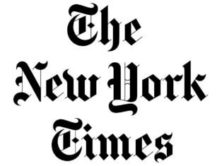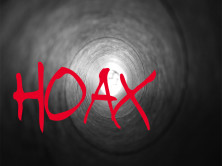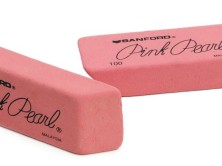Scientific American issued a new statement about how it handled Dr. Danielle N. Lee's blogpost about being called an 'urban whore.' (Credit: Scientific American, screenshot)
Scientific American has commented again about this month’s controversy when it unpublished — and then re-published — a blog post by Dr. Danielle N. Lee about being called an “urban whore.”
Lee, who writes the Scientific American blog “Urban Scientist,” had blogged earlier this month about a Biology-Online editor, identified as Ofek, who had asked her to contribute free monthly blog posts, as iMediaEthics wrote previously.
When Lee declined, Ofek asked in a private e-mail that Lee made public if she was an “urban whore.” Lee blogged about the exchange, but Scientific American soon deleted the post.
At the top of the controversy, Scientific American said the blog post was unpublished because it wasn’t related to science. Next, Scientific American shifted gears, saying it unpublished the post because it needed fact checking. Finally, in the bottom half of the ninth inning, Scientific American re-published Lee’s blog post and apologized to Lee. Sometime during all of this smoke, Biology-Online fired Ofek, the editor who started the fracas with his name-calling.
Rachel Scheer, from Scientific American‘s Corporate Public Relations, e-mailed iMediaEthics alerting us to the magazine’s latest statement about the incident. Scientific American‘s statement, in a Q & A format, addressed the reason for unpublishing Lee’s blog post, Scientific American‘s relationship with Biology-Online and what apologies have been issued all around.
“We are very sorry for the way that we handled the situation and for the upset that it has caused Dr. Lee,” Scientific American said.
iMediaEthics asked if moving forward Scientific American would review blog posts before publication to prevent future cases of unpublishing. Scheer responded with a statement:
“We are looking at our current practices. Scientific American will provide information to its bloggers to help them to better understand potential legal issues to help them know when to notify Scientific American of their concerns regarding those issues.”
Scientific American‘s Q & A repeated its earlier explanation for unpublishing — that it deleted Lee’s blog post “while we worked to verify an allegation contained in it” for libel reasons and get response from Biology-Online. Scientific American wrote:
“We were shocked and disappointed by what happened in the correspondence that Dr. Lee blogged about and wish to support her in her ambitions to bring issues of race and gender in science to the fore. However, we noticed a serious allegation was being made and that a person and a company were being named. This meant we were concerned about possible libel and consequences. We worked over the weekend to have the facts checked and to try to contact the parties to give them an opportunity to reply.”
Scientific American admitted making a “mistake” in not being transparent from the beginning about the decision to unpublish.
“In our concern to act quickly, we failed to promptly and fully communicate our intentions,” the magazine’s statement reads. “This breakdown in communication was a mistake on our part, and one that we regret.”
Because the incident happened over the Columbus Day holiday weekend, Scientific American said the whole process of unpublishing, fact checking and re-publishing was slow and “took longer than we hoped.”
According to Scientific American, it did let Lee know about the unpublishing “within half an hour of the post being removed, but the actual reason for removal was not clearly explained.”
Further, the Scientific American statement explained the magazine’s relationship with Biology-Online. Essentially, the statement said that there’s no real financial relationship between the two, but Scientific American does include Biology-Online in one of its online traffic metrics.
“Biology-Online is one of several science-themed websites whose traffic is reported as part of the Scientific American Network — meaning that, if someone were to look up “Scientific American” on Nielsen or comScore (services that track audience data), they would see two sets of numbers: one for the Scientific American “Channel,” which would just be ScientificAmerican.com, and a second for the Scientific American “Brand,” representing the Scientific American Network, which includes several sites, including Biology-Online,” the magazine’s statement reads.
“Beyond ascribing their traffic, there is no additional commercial relationship between the sites in the Scientific American Network and Scientific American or ScientificAmerican.com. We do not sell ads into Biology-Online nor provide them with any other remuneration nor, in turn, do they provide any remuneration to us.”
Scientific American went on to say it is not “planning on taking any action against” Biology-Online over the incident.







Comments Terms and Conditions